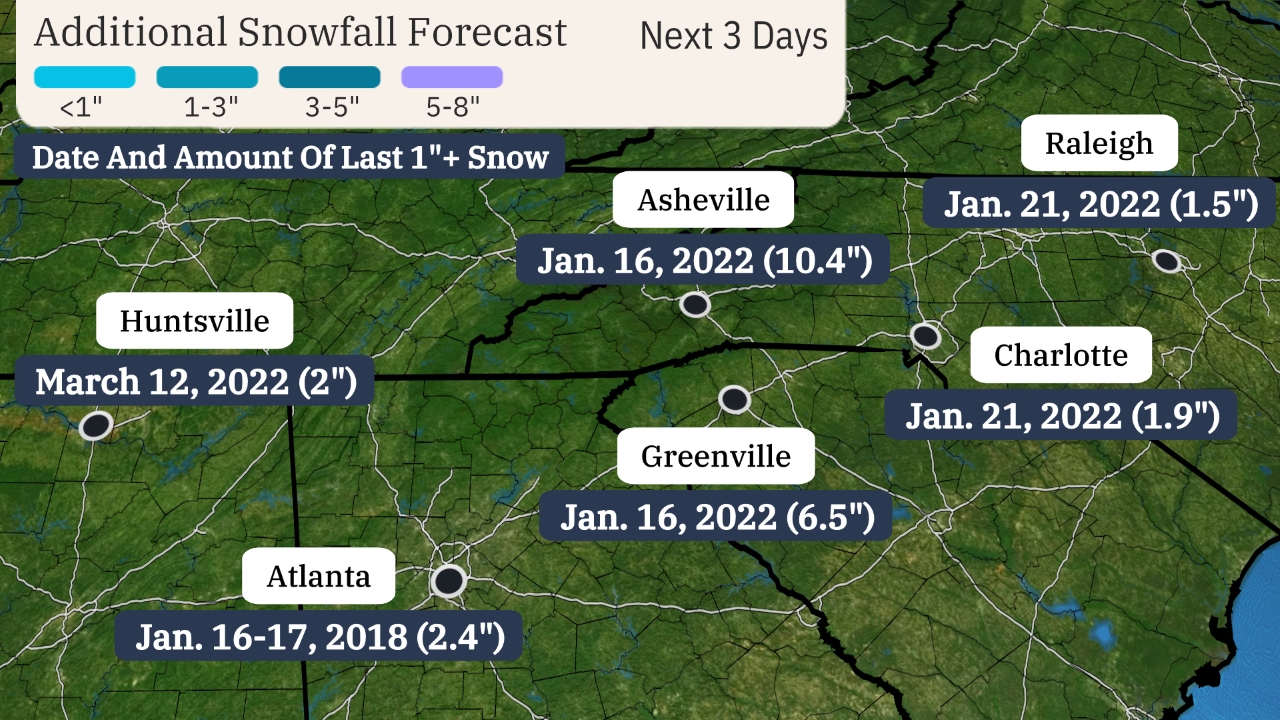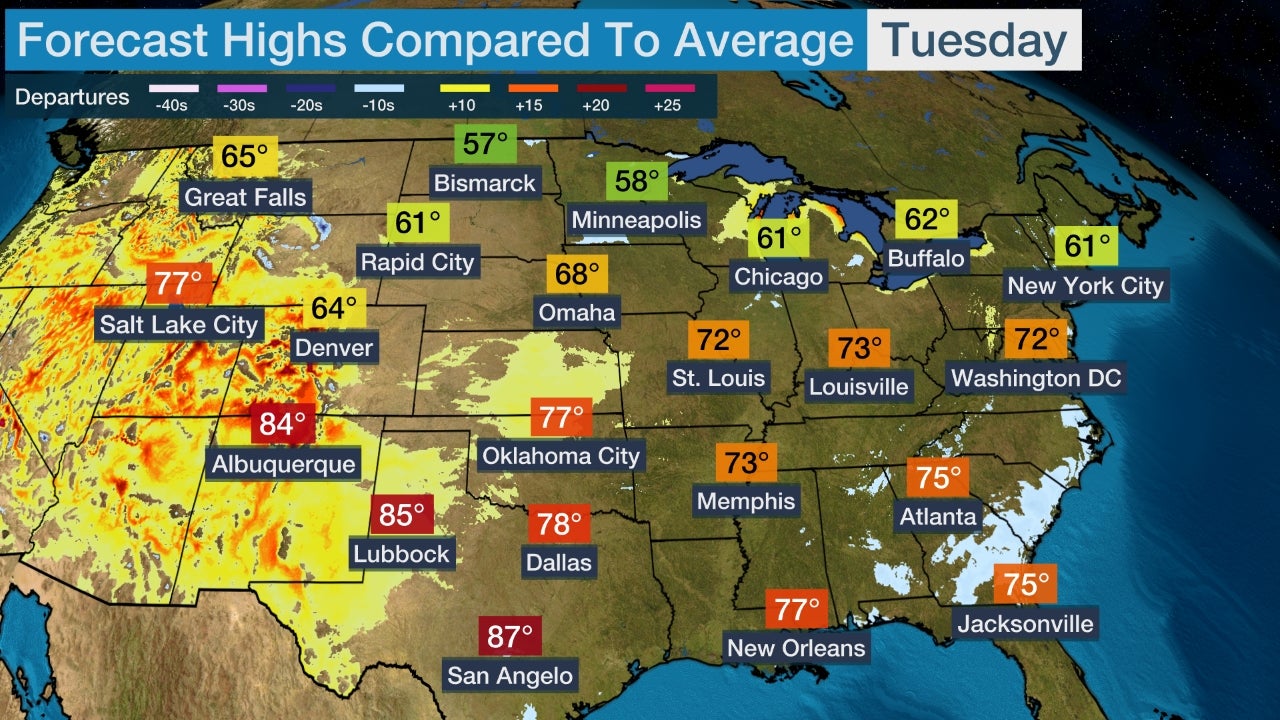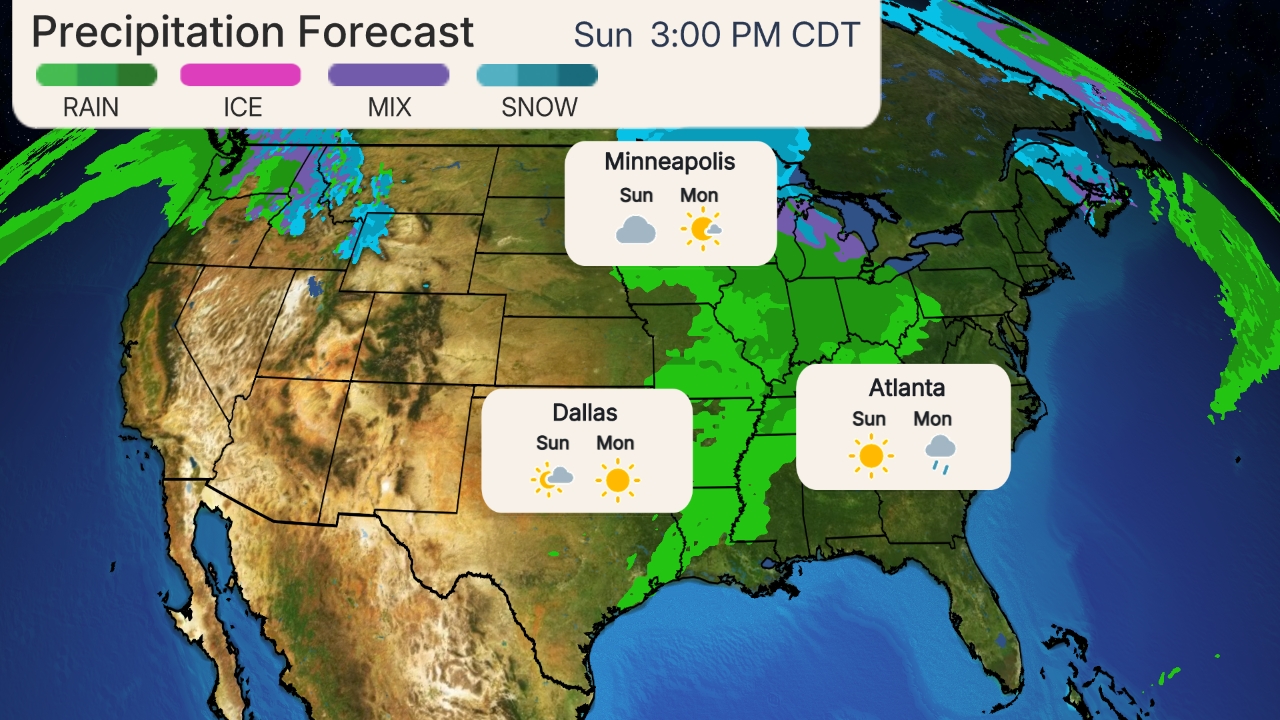Jonathan Erdman
A prolonged arctic outbreak is about to receive a boost that will shatter daily records in the Plains as far south as Texas this weekend into next week and could be the most widespread, anomalously cold air anywhere in the Northern Hemisphere on Valentine's Day.
This cold saga kicked into gear last weekend in the Plains and Midwest and has persisted this week.
Subzero low temperatures were recorded last Sunday morning in Chicago (minus 7 degrees) and Minneapolis (minus 16 degrees). Those are the coldest temperatures so far this winter in those cities.
SPONSORED: Epic winter clearance sale at Sierra Trading Post
Parts of northern Minnesota and North Dakota had wind chills colder than minus 50 degrees. Some locations have even seen air temperatures plunge into the minus 40s.
 Current Wind Chills
Current Wind ChillsIt's been so cold that infrared satellite imagery utilized by meteorologists to monitor clouds has picked up on the bitterly cold ground instead.
Even pasta stood up on Friday.
Another southward plunge of the jet stream tapping cold air from Alaska and western Canada – which is setting high-pressure records for February – over areas of snow cover are the ingredients for this February cold snap.
Despite this, only a smattering of daily record lows was set from this first round of bitter cold.
Grand Island, Nebraska, plunged to minus 18 Tuesday morning, their coldest temperature in 25 years. Cut Bank, Montana, near the Canadian border, plunged to minus 38 Wednesday morning, their coldest since 1994.
But this lack of cold records is about to change in a big way.
The Second Blast
A reinforcing blast of cold air will surge southward through the Plains into Valentine's weekend and linger into at least early next week.
The second cold blast is likely to smash scores of daily record lows and cold highs over several days, particularly from Sunday through Tuesday.
Subzero lows could occur as far south as parts of Oklahoma and the Texas Panhandle. Oklahoma City could plunge below zero for the first time in over four years and only the third time this century.
Teens below zero are possible deep into Kansas and minus 20s are possible as far south as Nebraska.
(MAPS: 10-Day Forecast U.S. Highs/Lows)

Forecast highs – if you want to call them that – may struggle to rise much above zero in Kansas City and will likely be stuck in the single digits and teens from Amarillo, Texas, to Tulsa, Oklahoma, to St. Louis on Valentine's Day.
When considering how far below average these temperatures will be, this weekend outbreak is even more impressive.
These teeth-chattering temperatures will be 40 to 50 degrees colder than average for mid-February in parts of the Plains, from Montana to the Texas Panhandle.
In fact, nowhere else in the Northern Hemisphere – not even Siberia – will experience temperatures so far below average on Valentine's Day than in the central U.S. This shows up nicely in our departure-from-average highs map below.
(MORE: What You Need to Know When It Gets Ridiculously Cold)
 Departure From Average Highs on Valentine's Day
Departure From Average Highs on Valentine's DayThis isn't just a story for the recently cold-weary Plains.
This second cold blast will also ooze eastward into the Ohio and lower Mississippi valleys during the weekend.
Some of this cold air has also seeped into parts of the Pacific Northwest, setting up periods of snow or freezing rain west of the Cascades in Washington and Oregon.
Along the East Coast, the cold air will be felt in the Northeast in somewhat muted form compared to the frigid Plains.
In the Southeast, temperatures will be near average but cooler than earlier this week. The Florida Peninsula may only see temperatures knocked down to more seasonable values in mid-February.
Given the ferocity of the cold air, occasionally accompanied by winds, dangerously low wind chills are likely to persist. Limit time outside, and if you need to head outdoors, take precautions to cover your skin.
(MORE: What is the Wind Chill?)
How Much Longer?
One other impressive aspect of this cold outbreak is its longevity.
If you find yourself like an impatient kid in the backseat of a long car ride asking, "How much longer" will this cold last, you'll find the weather pattern answering back like your parents once did: "Be patient."
According to the latest medium-range forecasts, colder-than-average temperatures are expected to linger in much of the U.S. through next week.
SPONSORED: Epic winter clearance sale at Sierra Trading Post
 Temperature Outlook
Temperature OutlookThe longevity of this cold outbreak may end up being something not seen in years for parts of the nation's midsection.
Cold streaks in Omaha, Kansas City and Oklahoma City could be the longest in each location since an infamous December 1983 cold snap, meteorologist Bob Henson noted.
(MORE: America's Coldest Outbreaks)
This could be the longest streak with at least subzero low temperatures in Sioux City, Iowa, since 1989, according to the National Weather Service.
There is some hint the ferocity of the cold could finally relent late next week or next weekend.
So you'll need patience to wait out the end of this overall colder-than-average regime.
Spring is still over a month away, after all.
The Weather Company’s primary journalistic mission is to report on breaking weather news, the environment and the importance of science to our lives. This story does not necessarily represent the position of our parent company, IBM.
The Weather Company’s primary journalistic mission is to report on breaking weather news, the environment and the importance of science to our lives. This story does not necessarily represent the position of our parent company, IBM.

No comments:
Post a Comment